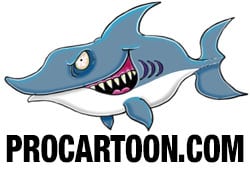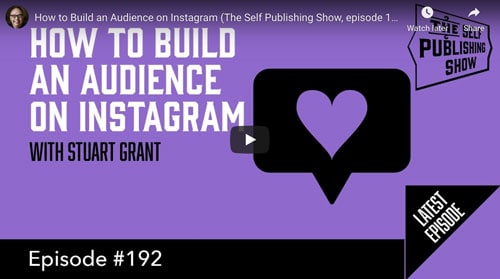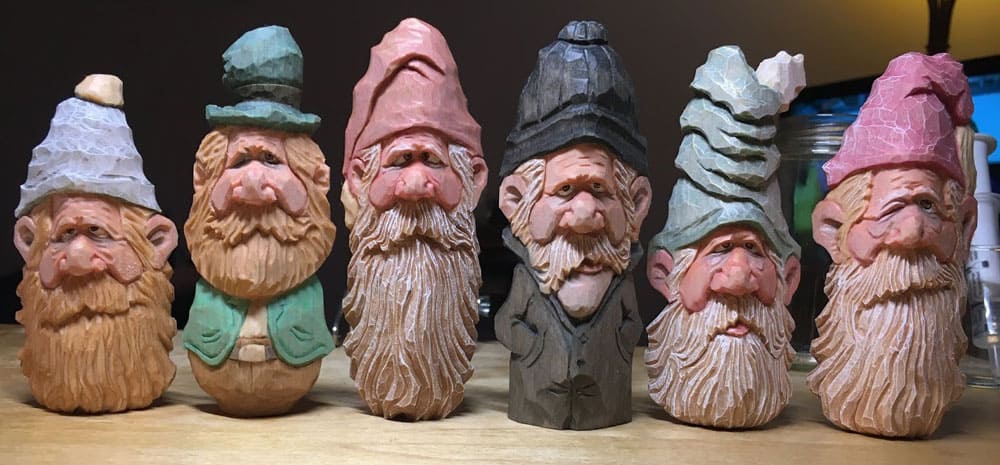Procartoon – Podcast 6 – Interview with Richard Houlden
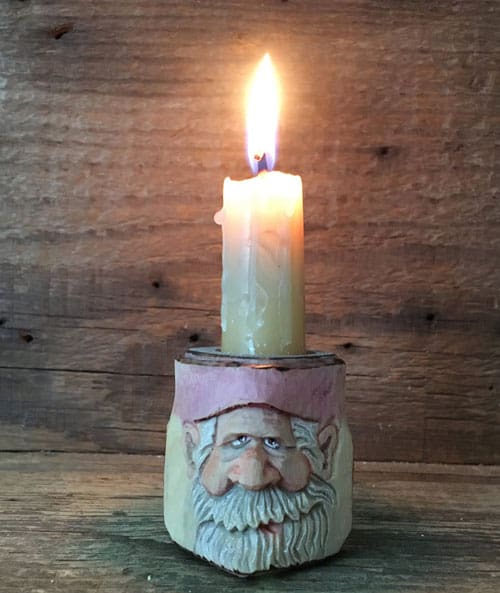 In this Episode of the Procartoon Podcast…I talk to Richard Houlden from Tidewater which is located on the coast just over 60 miles northeast of the Virginia state capital of Richmond.
In this Episode of the Procartoon Podcast…I talk to Richard Houlden from Tidewater which is located on the coast just over 60 miles northeast of the Virginia state capital of Richmond.
I had first been contacted by Richard a couple of years ago, asking a question about Photoshop which I featured in episode 2 of the podcast.
I recently made a request in the April 2020 Procartoon Newsletter for cartoonists and other related trades and crafts to appear on the show. Richard contacted me and after seeing his amazing work we fixed up a skype interview which you can listen to.
I really enjoyed discussing his progression from cartoonist to amazing woodcarver. I love cartooning but it fascinates me when the cartoons lift off the page into the three-dimensional world and in this case the 3D world of wood carving. Richard, who is multi-talented, produces some beautiful pieces of art, teaches his craft and has published books on the subject to help other carvers and cartoonists to produce their own.
I also give a personal update and answer some more of your questions which I really appreciate you sending in. Please keep them coming – through the contacts page.
Scroll down to read the extensive show notes below in conjunction with the Podcast Audio – All links in the Podcast are detailed in the show notes plus additional images and screenshots to clarify and technical discussion in the text.
Procartoon Podcast 6 with Rob Nesbitt
This Episode is Sponsored by JohnOverall.com
WordPress and Web specialists.
Show Notes for Procartoon Podcast 6
Hi, I’m Rob Nesbitt and this is the procartoon podcast.
I look at the tools of the trade, tips, tricks, podcast reviews and interviews and more to help you in your cartooning and artistic work.
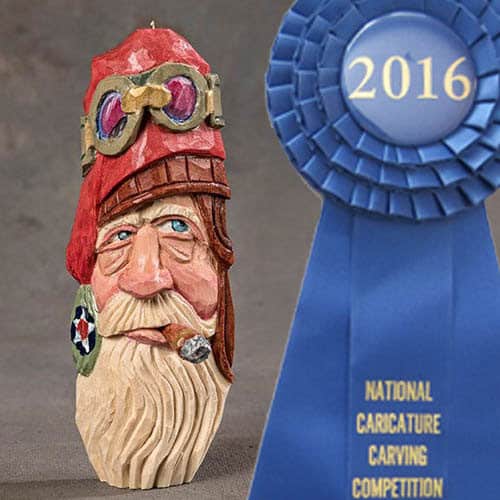 What is in this episode of the Procartoon podcast?
What is in this episode of the Procartoon podcast?
In episode 6 of the Procartoon podcast, I talk to Richard Houlden, a native of Nebraska and now living with his wife and two sons in Tidewater, Virginia which is on the coast about 60 miles from the state capital Richmond.
Richard is a self-taught cartoonist and woodcarver who has skillfully blended his passion for cartooning and carving. He makes some amazing pieces of cartoon carving and it’s all done in the comfort of his own living room.
I first corresponded with Richard back a couple of years ago when he submitted a question that I featured in Episode 2 of the podcast. More recently in the April edition of the Procartoon Newsletter, I asked all subscribers if any cartoonist or related trades or crafts would like to appear on the podcast. Richard put himself forward and after looking at his amazing work we set up a Skype interview which I found fascinating.
There will be some more listeners questions later in the podcast, so keep them coming in, please. They are really much appreciated and keeps me on my toes!
Before we get into the interview with Richard a quick update…
Now (as I speak) in the sixth week of the Covid-19 Lockdown here in South Wales in the UK I have managed to get so much done. I am currently writing a novel and designing the cover myself and have almost finished the first draft of around 80,000 words.
Designing the book cover was not as easy as it sounds as I have found out by listening to a recent webinar by the Self Publishing Formula website. Stuart Bache, a professional book cover designer gave a superb insight into what makes a great cover. His step by step demonstration using PhotoShop made me realise that it doesn’t just have to look great but there are also different fonts, layouts, and visual styles for each book genre.
This time ‘in limbo’ has also been very productive in letting me draw cartoons to my heart’s desire! I have kept up a strategy of getting up early and getting stuck straight into work. A lot of people have switched off! Staying in bed late, going to bed late, and generally not getting a lot done. This lockdown will pass and as I said on my previous podcast – I don’t want to look back and think I wasted time. It is the best opportunity you will have to get work done!
I have listened to at least one podcast during my daily 10,000+ steps around the garden.
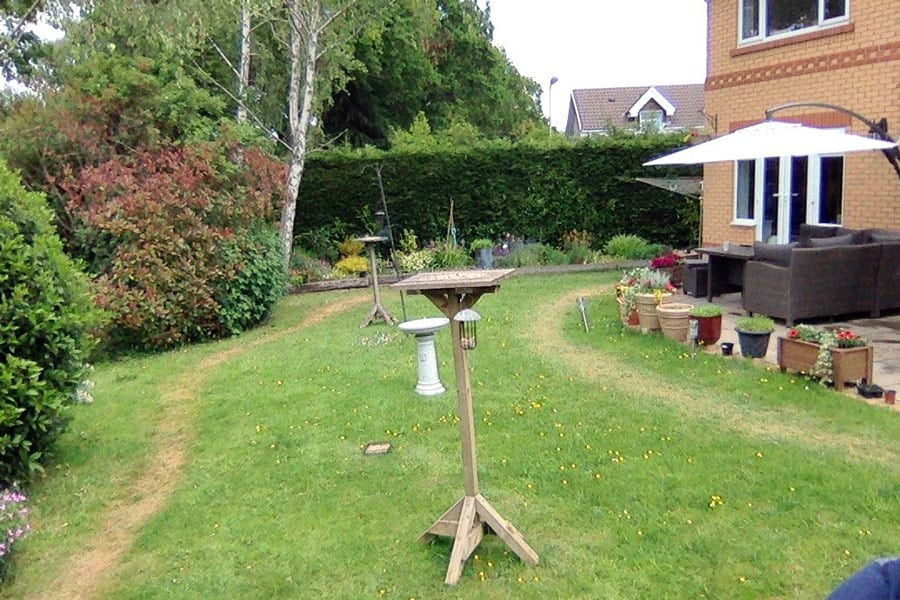
I have also taken several short courses and Webinars including practical advice on the benefits of Instagram. It is an excellent way to get your cartoons out there. I must admit that I have not been looking at that platform too seriously but have changed my view after listening to the expert advice given by Stuart Grant on the Self Publishing Show.
Self-publishing books aren’t generally connected to cartooning. The point here is that the advice on Instagram is highly relevant for cartoonists as Instagram is a visual platform, stripped away of all the waffle and white noise that you find on others such as Facebook and Twitter.
I am not decrying those platforms. I am saying that Instagram cuts right to the chase and can display your cartoons and artwork in a great visual experience for potential fans and customers. I am now on the case and will update you on what I find!
OK enough of me here’s the interview with Richard Houlden which was recorded on Skype on 6th May.
Transcription of the Richard Houlden interview
Recorded via Skype – 6th May 2020
Cartoons2Carvings – Richards Etsy Store
Cartoons2Carvings web site – Cartoons2carvings.blogspot.com
Rob: Hello, Richard, and welcome to the podcast.
Richard: How are you, sir?
Rob: Very good today. Thank you very much. Before we dive in, could you tell me a bit about yourself and how your career in cartoon started?
Richard: Well, cartooning for me started when I was a little kid and the Sunday comics would come. Unlike most people, when the paper would come, I would grab the comics and instead of reading those to see what would make me laugh, I would flip through them to see which one caught my eye and begin to sketch it out and see if I could reproduce it. That’s how my cartooning career started.
Rob: That sounds very much like mine actually because I was an avid comic reader, and I used to look at all the cartoons in the newspapers as well. That sounds quite familiar that.
Richard: Exactly.
Rob: Going on from there, when did your interest in carving start?
Richard: My interest in carving actually started in the early ’80s. It was actually spawned from the fact that I was from a generation that walked around with a pocket knife. We were still allowed to carry those. One day, I was walking through the town that we lived in. We didn’t have sidewalks. We just had these deep ditches so you had to pay attention to where you were walking. I was coming along and there was a stick that was in the way so instead of just picking up and throwing it off to the side, I pulled out my knife and started cutting on it. Then one thing led to another, and I started carving out characters.
Rob: If you’re carrying a knife around that way, it’d be a different story, isn’t it?
Richard: Exactly.
Rob: You’ve combined the two. How did that come about? Because I was really interested and because I’ve done something similar. My cartoons off the paper, I transfer to driftwood figures. Something similar to yours but you’re far more along the line than I am with it. When did you discover that it was a good thing to combine cartoons with carvings?
Richard: Actually, it was in 2011. I had become a stay at home dad from an injury that my wife had sustained. Really, what spawned it is, I knew I was going to be a stay at home dad so I had bought a wood lathe, and I wanted to see what I could do just to keep myself occupied on those downtimes. I had basically shaped out a snowman with a top hat. It was basically a top hat and three different shape balls.
At the end of it, I said, “Do you know, if I had carved this, I could have actually made it into something a little bit more expressive.” I told my wife, I said, “I’m going to get rid of the wood lathe and I’m going to get back into carving. I’m going to see what I can do with the gifts God’s given me.” It really spawned from there.
Rob: You’re right though. I’ve looked at the carving characters that you’ve done. I’m quite envious really because you can get so much more characteristics and character out of a piece of wood when you carve it than just like I do. I just paint straight onto it and all the detail is paint, but yours is a combination of paint and carving. It’s just brilliant.
Richard: Oh, I appreciate that.
Rob: You’re doing all this carving, but where do you do it? You said you had a lathe. You’ve got a workshop?
Richard: No, actually, all my carving is done from the living room while my son sits on the couch and my wife sits in her chair and we’re watching TV. I’ve got a little apron that I wear that has a little tubing attached to it that holds the pocket of the apron open. I actually went to the hardware store and added some tubing to make sure that it is a really defined shape. I just sit in the living room and carve. Underneath my roll top desk, I’ve actually got a few cigar boxes that I was given with different size woods. On any given day, I can just grab a piece of wood, pull out my knives and go at it.
Rob: That’s brilliant. Really, you can take your carving knife anywhere, you don’t need a workshop. You’re quite mobile with it, I suppose. It’s a bit like cartooning where you can take it on a holiday or if you’re working and you’ve got a couple of hours spare somewhere else, you can just whittle away, I suppose, is it?
Richard: Yes, it really is. When I do my cartooning, I take little pieces of five by seven watercolor paper, and I’ll sketch out just a cartoon. Once it gets to the stage that I like it, I’ll get out my watercolor pencils and paint it up. The same is true with my carvings. I’ll take a little block wood. The main thing I carve is faces because when I used to cartoon, I used to love to draw just different faces. I do the same thing when I carve, I’ll just carve out– What I call them is carving doodles because I don’t actually draw anything onto the wood. I just start building the face and let it evolve into whatever.
Rob: That’s the best way. Far more creative when you just let it roll really. That’s the way I like working.
Richard: Well, and the nice thing is this. It’s not only relaxing for me just to sit there and meditate while I’m carving, but I don’t have a concept of what it’s going to become unless I’m carving like a pilot or a Santa ornament. The fun thing is to watch it slowly become something.
Rob: That’s great. In the UK where I live, there doesn’t seem to be that enthusiasm or the popularity for woodcarving, but it seems to be huge in America, particularly, woodwork and woodcarving. Is there a community around you that you can share ideas and meet up with people?
Richard: There’s really not. The biggest community of woodcarvers that I’m attached with are on Facebook. There’s a woodcarving club up about an hour and 40 minutes away from me, but at the time they meet, I’m at work. In North Carolina and different states, there’s a stronger presence of woodcarvers, but unfortunately in my area, there’s not much.
Rob: Oh, I thought there may have been because I go on the internet quite a bit. I look at woodwork as well. I’ve got another website, Crafts Finder. Perhaps it’s just the impression I’m getting off the internet that is a huge thing in America.
Richard: It is except the thing is, there are a lot of carving clubs out there. Some of the carving clubs are having a hard time staying open and keeping active because so many people want to do that. They want to go online, and they want that online presence. There are a lot of carvers that do a lot of videos. A lot of folks now are just sitting at home spending their time carving with other carvers online opposed to going to clubs.
Rob: After this forced lockdown, I suppose that’s the way things will progress I think?
Richard: Yes, I’m hoping things open back up. There are a couple carving shows that I was supposed to go to they got shut down. The nice thing about the internet is that’s actually how I’ve become known with different people in different states is through Facebook and through some of the carving clubs and groups on Facebook.
Rob: You can find anything, do anything, and learn anything really now. The woodcarvers of America, you got involved with that. How did that come about? You went to competitions, how does that work?
Richard: You’re talking about the Caricature Carvers of America.
Rob: Sorry, yes, that’s it.
Richard: That’s an organization that started years ago and their whole purpose in life is to not only encourage woodcarvers but encourage caricature carving, which is like a cartoon version in carving. They have a limited membership. They used to keep 25 active members. Then, of course, they have the emeritus members. They have a competition every year. Back in 2012 when I was getting back into carving, a real good friend of mine and mentor, Mark Akers, who we met online, he was encouraging me and helping me move along in my carving career. At one point, he said, “Hey, you know what, you should really consider entering some pieces in the Caricature Carvers of America.”
I had only been carving for about a year. I was like, “Oh, you’ve got to be out of your mind.” Lo and behold, between his encouragement and my wife’s, I entered a few pieces. My first time entering, I got a fifth place for an ornament.
Rob: Brilliant.
Richard: It was pretty exciting.
Rob: It’s a bit different though to actually go into an event. I think with these, you sent them through the poster now?
Richard: Everybody told me how exciting it was and fun it was, and it is. It’s different because you box up your piece, you ship them out to them in August. They judge them and then you pay the return postage, and it gets mailed back to you. It’s exciting. I joke with people it’s exciting for about 10 minutes when you open your box and you find out if you’ve got ribbons or not. You’re like, “Okay, well, time to carve again.”
Rob: Could you go through the actual process from start to finish? You’ve got a commission or you’ve got an idea. From the very beginning to the finished article, what process do you go through?
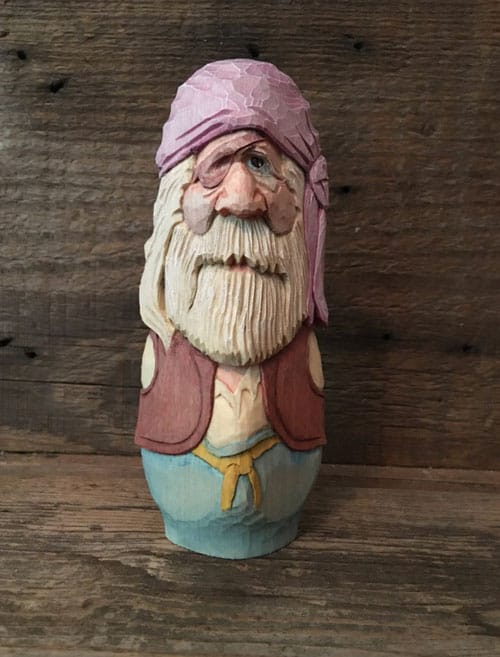 Richard: Well, everything I do, like I said before, I do from scratch. I just carve from a block of wood. Basically, what I’ll do is I’ll start with a block of wood. If I know that I’m going to carve like a Santa or an ornament, I’ll shape the hat first. A lot of carvers don’t. They carve the face first. I carve the hat first because it’s easier for me if I carve the hat, then I make the face match underneath.
Richard: Well, everything I do, like I said before, I do from scratch. I just carve from a block of wood. Basically, what I’ll do is I’ll start with a block of wood. If I know that I’m going to carve like a Santa or an ornament, I’ll shape the hat first. A lot of carvers don’t. They carve the face first. I carve the hat first because it’s easier for me if I carve the hat, then I make the face match underneath.
Once I’ve got the hat formed, then I’ll start by carving underneath the nose and setting up the nose. Then I’ll start setting in the eyes around the nose. Once I have somewhat of an expression built-in with the eyes, then I’ll match up the mouth and the rest of the face to match the expression of the nose and the eyes. I slowly go from section to section. It builds as I go to form the full piece.
Rob: Do you sketch out the ideas first or is it just straight off the bat?
Richard: It’s straight off the bat. I just start carving the chunk of wood. Most people do draw and they actually recommend that you do, but I treat the ways I did when I would cartoon. That I would just start drawing a line and just let it slowly build into the character that was going to be.
Rob: You always get better results like that I think. You’ve written two books, which I found interesting. You’ve got them for sale on Amazon. Cartoons 2 Carvings and It All Began with a Pencil. What made you decide to become a published author?
Richard: Well, the first one was a pattern book for woodcarvers. The way that came about, I had a gentleman that had seen some of my cartoons. He’s a carver and he had contacted me and said, “I was interested in seeing if you could develop a character for me that I could end up carving.” I said, “Sure. What do you want?” The worst thing was he contacted me, and I lost the note in the pile on my roll top desk. It was a year later that we actually got in touch and started the actual process.
He wanted a hobo, so I drew up a hobo for him. As I was doing this, my friend and mentor Mark Akers, I would send him photographs. I would say, “Well this is what I’ve got in development, what do you think? Could you carve from this if I sent this pattern to you?” He would tell me areas that I needed to work in and reshape things. I finally got the character done. Mark told me that he could carve from it easy. I sent it to the gentleman that had requested it. He actually ended up carving the piece and winning a ribbon from it. Then he contacted me again. He said, “I’d like to do another piece. Could you design–?”
The second one was a Santa hobo. I designed that. Went through the same process where I sent pictures to Mark and said, “How am I coming? Could you carve from this?” At the end of that, at the end of the second one, he said, “Really, Richard, what you should consider doing, instead of doing individual pieces, you should develop a book.” He said, “You should start drawing up some characters and see if you could actually put a book together.” I published the first book.
Then because cartooning has always been my greatest passion, I’ve got cartoons that I had drawn back in the early ’80s. I said you know what, I think I’m going to publish my second book, solely based on my cartoons because I want them to basically have the light of day shined on them so that people could see them. The first book was for woodcarvers. The second book was for me so that I could say my stuff’s out there.
Rob: Was it easy to get them published?
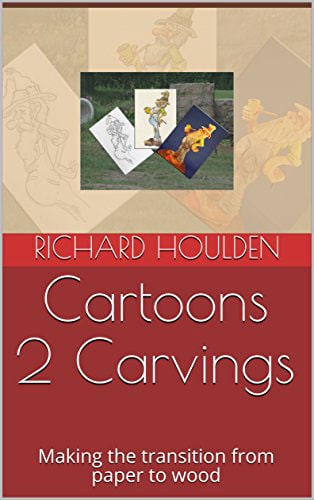
Richard: I published through Amazon. They’ve got an extremely easy process. They walk you through every step of the way. I’ve got an aerospace engineer for a wife and two boys that get mostly straight As. I had three people that had to proofread everything I did before I sent it to the publisher. Then Amazon has a process where once you put the book together, they give you templates to work from. You’ll do a proofing of your book. They’ll put it through their process, lets you know any area that margins are off or issues with an illustration. Then once you make those corrections, upload one last time and you’re published.
Rob: Just picking up on something you just mentioned. You said you found some old cartoons that you did back in the ’80s. Are you like me, you keep everything that you’ve ever done?
Richard: I am. I’ve got an accordion folder that’s got little sketches and cartoons that I’ve done that I just file them away. Then in my bedroom, I’ve got two or three manila folders just full of cartoons, partial stories. I’ve got two children’s stories that if I whatever, get organized, I’d love to have those published.
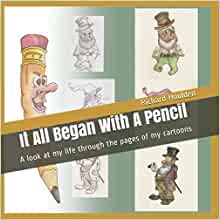
Rob: Is that stories or Picture Books?
Richard: Actually, stories that I just need to get them written out and then do the illustrations. Sometimes life gets in the way of you being you.
Rob: I know exactly what you mean. You do some teaching as well. You’re showing people how you do your craft. Could you tell me about that? What exactly do you do? Is it online or face-to-face?
Richard: Actually, it’s face-to-face. I do some demonstrations on my Facebook page. It actually started last year. I had done some little one on one sessions with the vets at the DAV in my town. I was actually contacted by a gentleman, and he said, “When do you go back home to Nebraska to visit family?” I said, “Well, I haven’t been back since ’76.” I said, “Why do you ask?” He said, “Well, I was thinking that you could come to Nebraska and teach a class at the Doane Experience, which is an organization that is held every July.
I got off the phone and I was laughing. I said, “This guy’s out of his mind.” My wife said, “What’s that?” I said, “He wants me to come to teach a five-day class on carving faces out in Crete, Nebraska.” She said, “They want you to come to teach a class in your home state so you could go home and visit the family. You told him what?” I said, “Well, I told him no.” She said, “Contact him back. Tell him if you can get me, students, I will come.” I did. I contacted him back and I said, “If you can get me, students, I’ll come out.” I was blessed last year that they sold out my class faster than any classes in the past 10 years.
Rob: That’s brilliant.
Richard: I got to go home to Nebraska.
Rob: How did it go? Did you enjoy it?
Richard: It was the first time I had ever taught a class to more than two people at a time. It was the best time I ever had. It was funny because I had talked to my wife on Wednesday, halfway through the week of classes. She knew that at the end of the week, I was going to go visit some family that I hadn’t seen since ’76. She said, “How’s it going?” I said, “Honestly, I’m heartbroken.” She said, “You are?” I said, “Yes because this is almost over.” I said, “As much as I want to go visit family, I don’t want this to end.” I said, “This was probably the greatest experience I’ve had in my carving career.”
Rob: That’s fantastic.
Richard: It was wonderful.
Rob: I’m going to put you at a time machine now. If you could go back to when you very first started drawing as a small child, what advice would you give yourself?
Richard: I would have told myself to actually invest the time. In that, I mean I would have told myself that what you need to do is you need to get any schooling you can. You need to take any classes you can and do everything you can to be the best at this you can be. Because for the longest time, I looked at this that it was just a hobby, my cartooning. I don’t think I ever believed that I could make a living at it. It was predestined that I wasn’t going to. It was the same with carving. I never anticipated that I would be paid to actually go out to Nebraska or go down to Port Orange, Florida, and get paid to teach people how to carve faces.
I’d tell myself actually invest the time because everybody always says, believe in your dreams, but I actually believe that you have to invest the time to change your dreams into reality.
Rob: That’s spot on. I totally agree with that. I was the same. I used to just sketch, sketch, sketch, draw cartoons. There’s always this imposter syndrome, I think they call it, where you think, “I’m not good enough. I can’t do this.” I’ve found the harder you work, the easier it gets. Like you said, if you invest the time, you get the rewards at the end of it.
Richard: You do. I had a gentleman, he was a woodcarver. He asked me, he said, “If both we were on the same level if you could cartoon and have the same success as carving,” he said, “what would you choose to do?” I really upset him because I said I’d cartoon. He said, “That’s really disappointing.” I said, “Well next time hold up a card and tell me what to answer.” I said my first love will always be cartooning. As much as I love carving, if I could have the same success and get paid to go around and teach people how to cartoon, I’d do it in a heartbeat.
Rob: That’s great. We’re going to jump back in the time machine. I want you to go forward from now and say, in 10 years’ time, what would you like to have achieved in the next 10 years with your carving and cartoons?
Richard: Wow, that’s a good one. Actually, at this point in my life, if I could go into 10 years and guarantee what was going to happen, the only thing that I would wish for myself is that I would have the same enjoyment out of carving and cartooning is that I do right now. Because I’ve told folks I said, “I don’t do this for a living.” I actually am a stay at home dad, and I’ve got a seasonal job that I go out and move plants around to local Walmart. That’s what I do five days a week. For me, I told folks I said, “I could stop teaching tomorrow, and I could have my Etsy shop where it just no longer makes a single sale. I could stop posting any of my images of carvings on Facebook.” That would be fine because everybody would forget about me because I’ve no longer made a presence for myself.
The carving community would move forward, but I would still want to be to the stage where I found the same enjoyment out of it. Because if everything shut down, if I wasn’t teaching anymore, if I didn’t have my shop to sell my works, and if I didn’t have the people on Facebook following me, I’d still carve, and I’d still cartoon. I’m hoping that I still have the ability to do it and I still find the same pleasure and enjoyment out of it that I do today.
Rob: That’s it. That’s what it’s all about.
Richard: it is.
Rob: It is definitely. Just before we wrap it up, where can people find your cartoons, carvings, unbox?
Richard: My carvings, I’ve got a Facebook page, they can also find my carvings in my Etsy shop. Everything for me is under the name Cartoons 2 Carvings. The irony is that idea was based on the fact that one day I would like to take every one of my cartoons and carve them, and it turned out that carving became so popular. I went from cartooning to carving, so the name was almost like the destiny that I didn’t know I was going to have. Typically, if you put in cartoons, the number two and carvings so Cartoons 2 Carvings, you can find me on Amazon where my books are sold. You can find me in my Etsy shop, and you can find me on Facebook and Instagram.
Rob: Richard, thank you very much for appearing on the podcast. It’s been an absolute pleasure. I’ve been fascinated with everything that you’ve been doing and really love the carvings, just takes it to a new dimension. I do cartoons, I put them on word, but you just take them the extra mile. Well, an extra thousand miles in my book. You produce some fantastic work.
Richard: But I love your designs. I love the way that you work your cartoon design into wood. I joke with people, I said, “I’m a face carver,” and they say, “Oh, no, don’t talk bad about yourself. You’re really good.” I said, “No, what you don’t understand, I’m not talking bad about it. I love carving faces.” A lot of people tell me, “Oh, you need to go to the next level, you need to start carving full bodies.” I said, “Honestly, I need to do what brings me pleasure and joy because that’s what art is really about.” This isn’t a full-time job for me, so I need to do what brings me joy and makes me happy.
That was Richard Houlden who was a great guest to interview and I would like to thank him personally for sharing his cartoon to carving development.
I am still receiving questions from you and here is a couple:
The first is from Jeff Wilson. I am not sure where jeff is located are on the planet and he asks:
I am considering buying an airbrush to color and shade my cartoons. I know that it can be done on a graphics tablet but which would be the best way as I currently hand draw and paint everything?
Great question Jeff. Before I even knew about graphics software I bought an airbrush with a compressor plus an expensive hardback guide book. I used it once because I discovered photoshop almost straight after I had bought the airbrush.
Personally I found the airbrush cumbersome, messy and took too long to set up and clean. However, I know a few artists who use an airbrush and they can make some incredible artwork that would be very difficult to emulate on a graphics tablet.
It is horses for courses. You may prefer a tablet to physical airbrushing or the other way around. Perhaps you will enjoy and find a use for both. For me, it was an expensive mistake and I still have a virtually brand new Aztec airbrush in the box that I bought donkey’s years ago!
My advice is if you can afford it try both!
The next question is from John Scott, again not sure where you are on the planet. John asks:
I draw my cartoons in A3 size as I find they look far better when reduced. I had an Epsom A3 scanner that has passed its sell-by date. I am struggling to find a good replacement. Is there anything you can suggest?
If you are looking for a new scanner there are only a few brands on the market that I would look at and that is Epsom and HP. I base that on my own personal experience as I have used both and they were both very good. At the moment due to the Covid-19 situation, it is difficult to find A3 printers either suitable or available.
Your best bet is to go direct to the manufacturer’s web sites and enquire there for availability. As for models I would go for the Epsom Perfection V600 or the HP Office Jet Pro 7740 – that is if you can find one online to buy.
In the meantime, you could either take a photo of your large scale cartoon and use that. You would have to do a bit of work to sort out any shadowing. Another way is to do a split scan. This really only works effectively with black and white cartoons. Scan in each half of the cartoon and merge them with your graphics software. I do this all the time and I have an article explaining exactly how to do this. The link is in the show notes.*[see comment at foot of page]
Before I go are a cartoonist or a supplier of artist materials? Perhaps you supply art-related technology or have an art-based business. I am looking for people to share their cartoony world with others on the podcast. If you are interested in being featured please contact me through this link.
OK, that’s all for this edition of the podcast. I hope you enjoyed the interview with Richard Houlden. Thanks for listening and catch you on the next one.
*If you are looking for the link to the article for merging two halves of an A3 cartoon together I am in the process of preparing the article with images (apologies for the delay). In the meantime here is the abbreviated answer:
I often use international paper size A3 when I have a larger or complex scene to draw. It gives me more room to draw and I can get all the detail in with becoming fuzzy or scratchy. I then scan the image in two or more sections and stitch them back together using the layers pallet in photoshop. It is easy to align the separate sections when in layers. Just drop the opacity of a layer so you can see the layer beneath and you can move them exactly into position with the ‘move’ tool.
